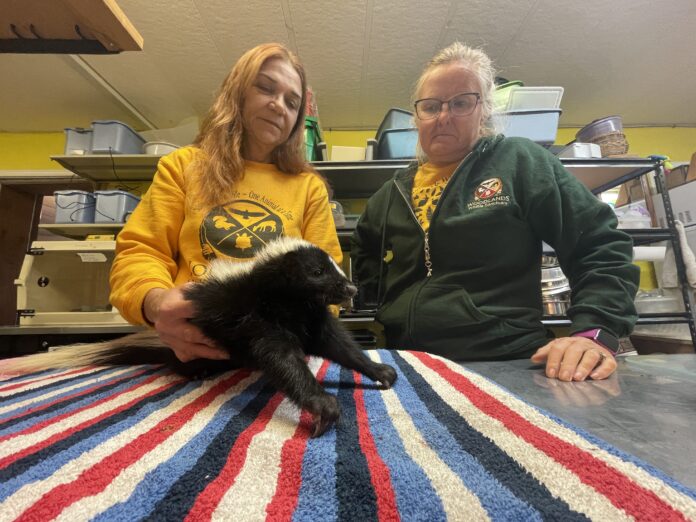

Don Ross’ grandkids spotted the loon first, huddled on the sand of the family’s Grass Lake cottage.
“They didn’t want to leave it. It was not well, it was lethargic, it was in some distress,” said Ross. “I’ve never seen a loon on a beach … just sitting there.”
Nora, seven, and her brother Lukas, nine, helped their parents put the loon in a box dotted with holes. Then they drove it to the Woodlands Wildlife Sanctuary in Minden.
The diagnosis? The loon was starving, said Monika Melichar, sanctuary founder and director.
After spending two weeks nursing the loon back to health, Melichar dropped the loon back off at the Ross’ cottage, where the family was able to send the loon, healthy, on its way.
“It was quite a learning experience for the kids,” said Ross, “teaching them about stewardship and conservation.”
It’s likely the teenage loon, about to fly south for the winter, would have died if not for the Ross family and Melichar’s expert care nursing it back to life.
Don Ross said the situation “says something about the condition of our lakes or our environment.”
For Melichar, rescuing loons and other animals is a 365-day career, with funding and food shortages meaning it’s been difficult to keep up with the demand for her services.
She’s seen 12 loons come through the doors this year, compared with two or three on a usual year.
“It’s been quite the year for loons,” said Melichar.
At the sanctuary, she opens a cage where a loon, full-grown, sits on clean and thickly- padded blankets. It’s severely malnourished as well.
It’s difficult to tell why.
Melichar said high water levels might mean loons have trouble finding fish to eat in deep waters.
Another explanation could be a depleted fish supply, with the Haliburton Highlands Outdoors Association reporting a depleted walleye population in the Kash chain of lakes (which includes Grass Lake).
Haliburton’s lakes are under increased stress due to increased nutrient loading.
A 2015 lake health report showed 48 per cent of properties on Grass Lake have mowed lawns bordering the water, which is shown to allow sediment and other harmful chemicals to flow into the lake.
For Melichar and her volunteers, the reason why animals are being brought to the sanctuary is secondary: they never refuse them. The important part is caring for them, a task made difficult by funding and food shortages.
For example, loons only eat full fish.
“We can manage that, but finding them is a challenge,” Melichar said. She invited any generous anglers to get in touch.
“Anybody who’s out there fishing and they catch sunfish or something, absolutely;we don’t need them live, they can be dead or frozen.”
And as the winter sets in, birds such as mergansers and grebes still have a dire need for food.
“This is just the situation now. The situation gets worse later on in the year.”
This year was also the first year in the sanctuary’s history that money ran dry.
“Normally in the summertime, we’ll have garage sales or people coming into our
gift shop to purchase items, we weren’t able to do that,” Melichar said. She added infrastructure upgrades, such as bringing running water into the building and creating a cage for birds of prey, took up a lot of funds.
“I’d say with COVID-19 the last two years have been severely challenging,” she said.
Her and a greatly reduced team of volunteers had to put in even more work caring for the 150 birds, skunks, raccoons, porcupines, squirrels and others who come with car-inflicted injuries, diseases and any number of other maladies. This year, the sanctuary estimates they’ve saved more than 700 animals’ lives.
“We have been overwhelmed with animals because we’ve been lacking volunteers,” she said.
That means they sometimes work 24-hour days; tough cases take extra time, such as a skunk with neurological damage. Melichar and a volunteer massage and move his arms and legs to help get him used to walking again.
“It can take a volunteer a good hour to work with the skunk. And there are only so many hours in the day,” Melichar said.
Despite difficulty sourcing affordable food for the animals, landing volunteers or even keeping lights on, Melichar said she’s passionate about the work.
“Wildlife is really on their own. Generally speaking, it is through some sort of human action that wildlife gets injured or orphaned,” she said. “We caused this to happen and we really need to fix it and make it better.”
The sanctuary launched an online auction this fall, “Bid Wild 4 Wildlife” where local art, tickets and other gifts were up for auction.




